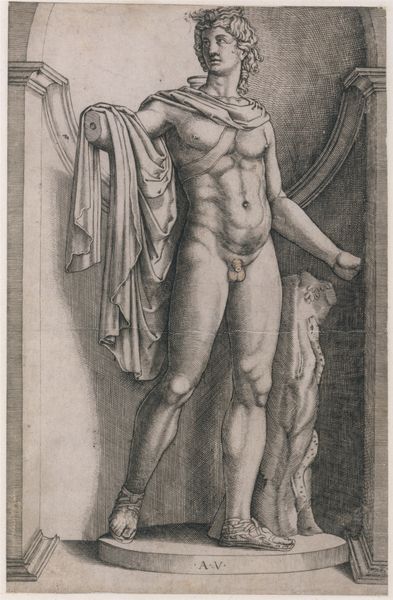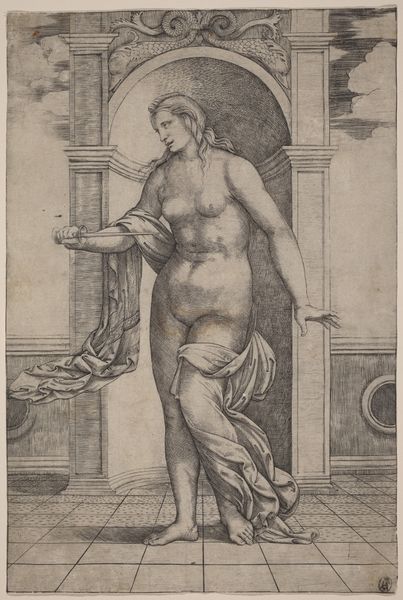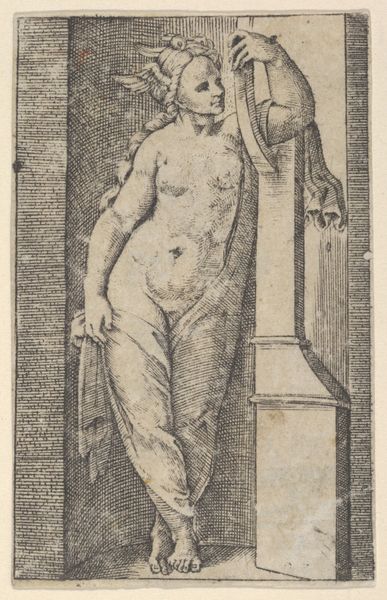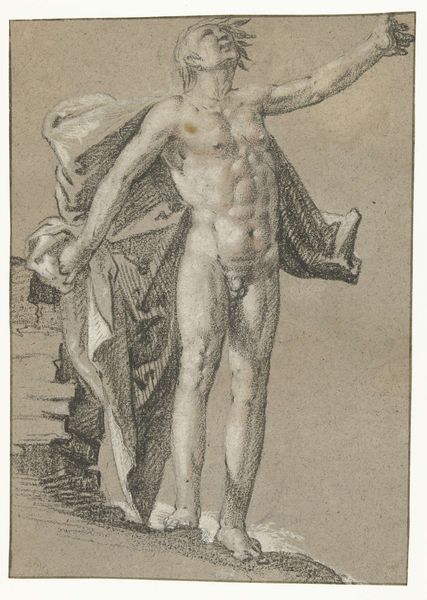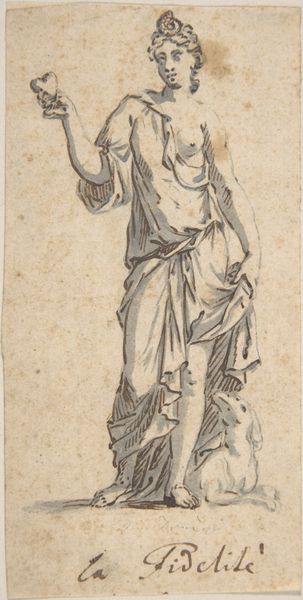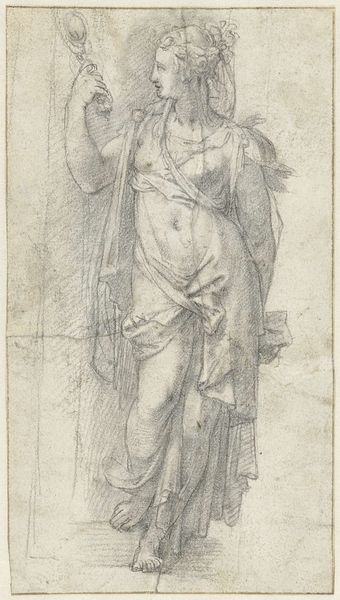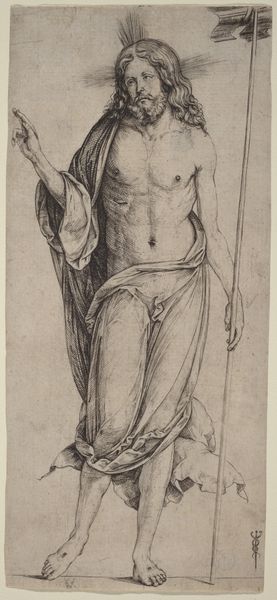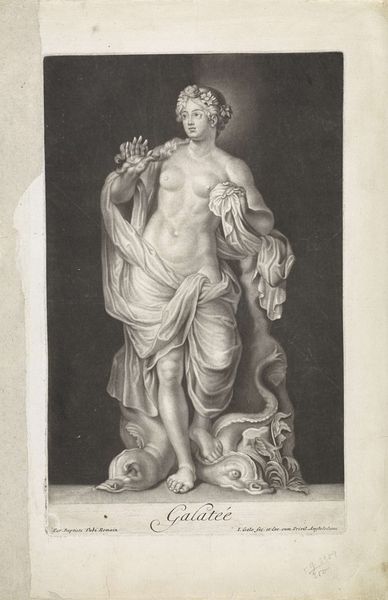
drawing, print, engraving
#
drawing
# print
#
classical-realism
#
figuration
#
history-painting
#
italian-renaissance
#
engraving
#
male-nude
Dimensions: 10 9/16 x 6 3/8 in. (26.9 x 16.2 cm)
Copyright: Public Domain
Curator: The lines! Crisp, clean, almost…clinical? It feels less celebratory and more like an anatomical study. Editor: We're looking at "Apollo," an engraving made sometime between 1514 and 1536 by Agostino Veneziano. It's currently held at the Metropolitan Museum of Art. Curator: Yes, the engraving technique really emphasizes form, doesn't it? See how the cross-hatching defines the musculature? It's incredibly precise. Editor: And politically charged! The revival of classical ideals during the Renaissance wasn't just about aesthetics, it was tied to notions of civic virtue, leadership, and often, imperial power. Showing Apollo as nude underscores that association with an idealized past that was very appealing to European monarchies. Curator: Perhaps, but the almost academic approach neutralizes the heroic undertones. He's not in action; there’s a passivity in the pose, a blankness in the gaze. Editor: But consider the intended audience. Prints like these weren't just art objects, they were reproductive tools. They disseminated images, classical ideals, and artistic styles to a much wider audience. Curator: Agreed, the circulation is crucial. And observe how Veneziano mimics the textures, from the smooth skin to the drapery, all achieved through varying densities of line. The lion adds to the composition as well, but is just an element to elevate the work. Editor: It's a study in contrasts—idealized form versus practical function, classical aspirations versus contemporary realities of distributing artworks. These prints become ambassadors of power and good taste. Curator: And here, it reminds us that what we see is just as important as how that message reaches the population. It shows how it might be used by rulers and cultural organizations, how they impact the masses using symbols like the figure of Apollo. Editor: Right, and these echoes continue to reverberate within our contemporary museum context too, the Renaissance has affected all of us in different ways and still impacts us today.
Comments
No comments
Be the first to comment and join the conversation on the ultimate creative platform.
